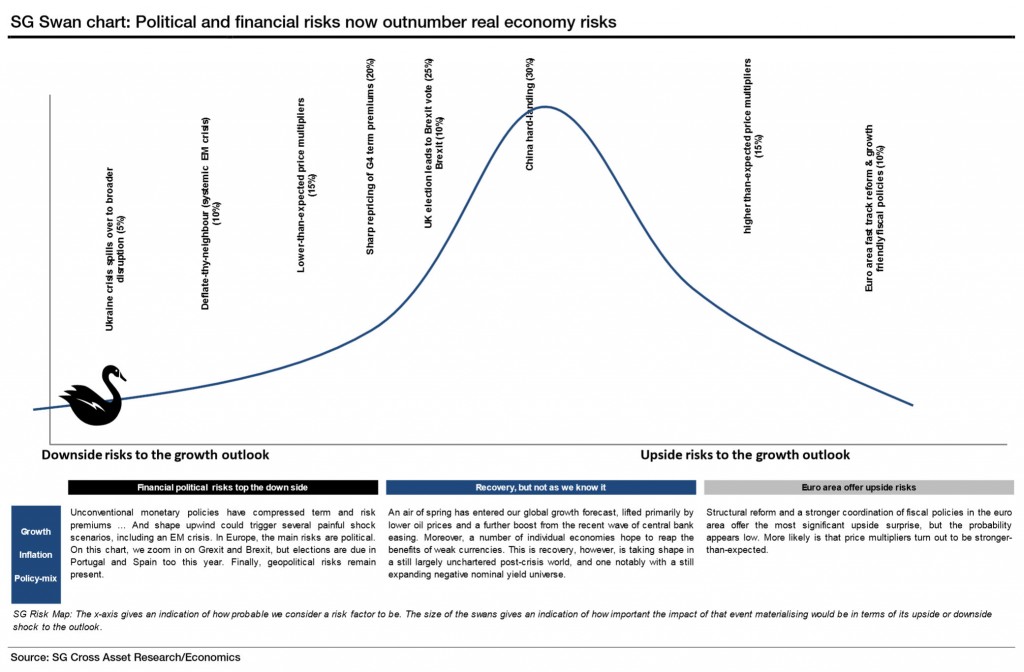Where Are 2015’s “Black Swans” Hiding According To SocGen?
Black swans are large waterbirds, a species of a swan, which breeds mainly in the southeast and southwest regions of Australia as sourced by Wikipedia. In financial markets, black swan is a term introduced by Nicholas Taleb- a finance professor and a former trader. The definition of a black swan is an event or occurrence that deviates beyond what is normally expected of a situation and what would be extremely difficult to predict. As appeared in Zerohedge, SocGen made a ranking for the Black Swans for 2015. SocGen attempts to quantify the biggest Black Swans risks (and hopes) of 2015 (yes, a foolish endeavor since nobody can actually envision what a black swan may be, by its very definition an event that was predicted by no one), it notes that “political and financial risks now outnumber real economy risks.” So what does SocGen believe are 2015’s black swans?
Here are the “bad” ones, alongside their estimated probability of occurring:
- Ukraine crisis spills over to broader disruption (5%)
- Deflate-thy-neighbor, or systemic EM crisis (10%)
- Lower-than-expected price multipliers (15%)
- Sharp repricing of G4 term premiums (20%)
- UK election leads to Brexit vote (25%), Brexit (10%)
- China hard-landing (30%)
Here are the “unexpected” events that would lead to a favorable outcome (sadly, these never actually occur).
- Higher than expected price multipliers (15%)
- Euro area fast track reform and growth friendly fiscal policies (10%)
And visually:






